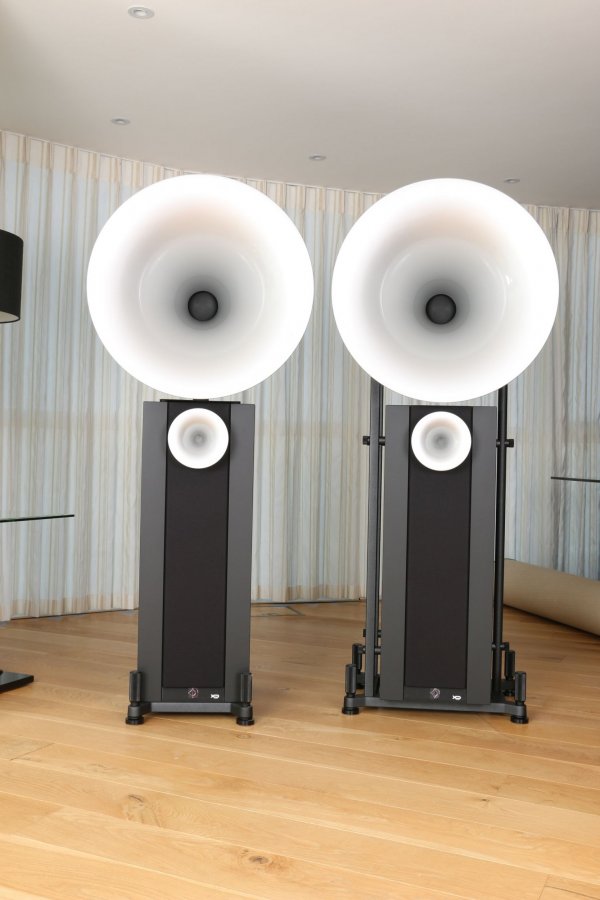After living with my Avantgarde Acoustic Uno (build 2004) from 2015, I wanted to convert my Uno with Sub225ctrl to the more modern XD technology. This is now done and works fine.
The conversion is quite easy.
I used an aluminum plate as a base, which is screwed onto the existing heat sink. I didn't want to chew the original. If you want the control display, which is also built into the XD, you should perhaps discard the Sub225 coolingfins and insert a new aluminum plate. I don't need the display because after setting the DSP I don't need it anymore. Nevertheless, if I should do it again, I would discard the cooling fins and work with a large, suitable aluminum plate. The power amplifiers do not get warmer than 39 degrees Celcius even at high volumes.
Removing the old circuit board is very easy. Unfortunately the toroidal transformer is glewed on and did not go down even with heat.
I was only able to solve this with a saw.
I exchanged the XLR input socket for a network socket from Neutrik.
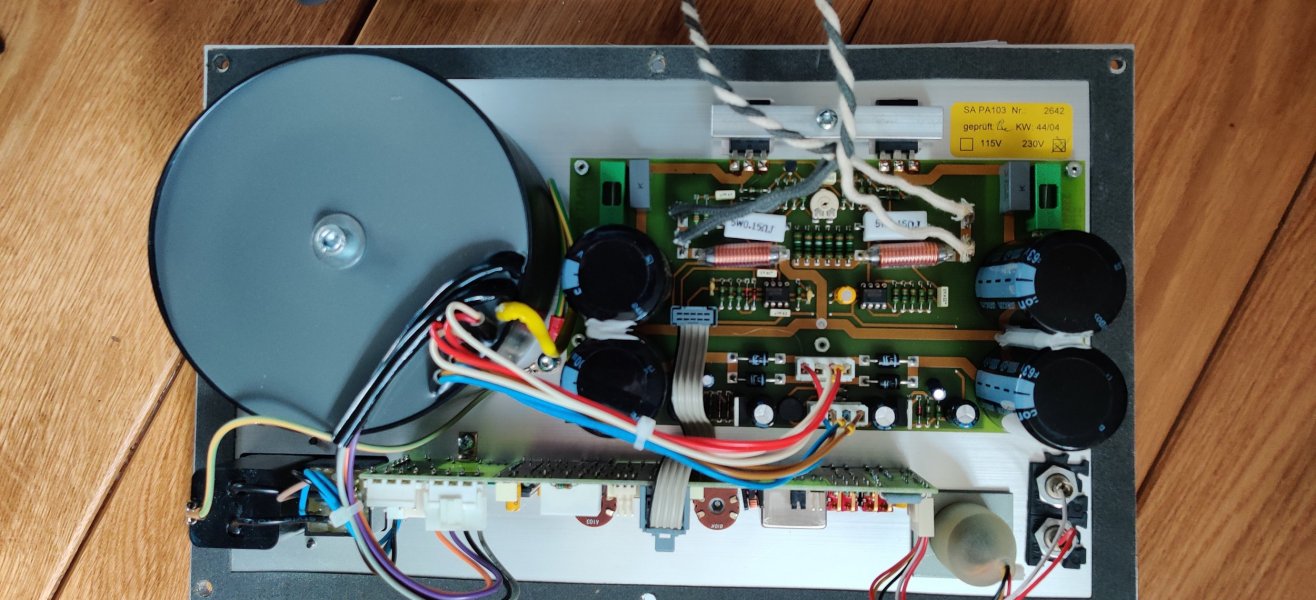
Sub225 Ctrl from the inside

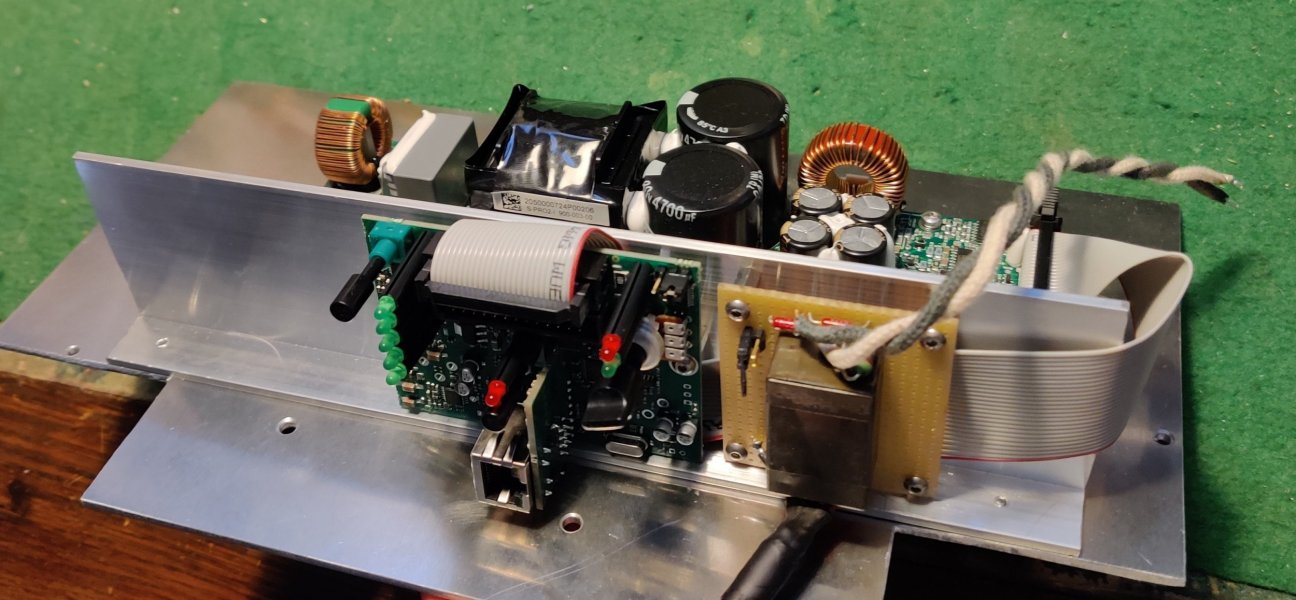
Complete chassis ALLDSP XM12 left and Lundahl Input Right

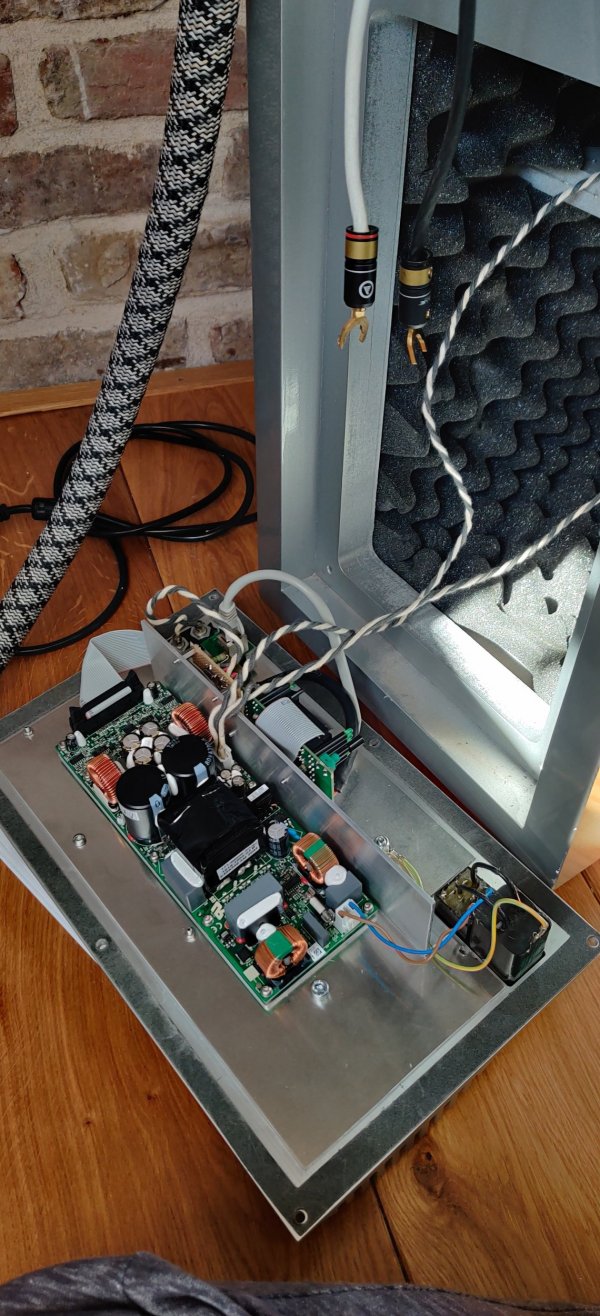
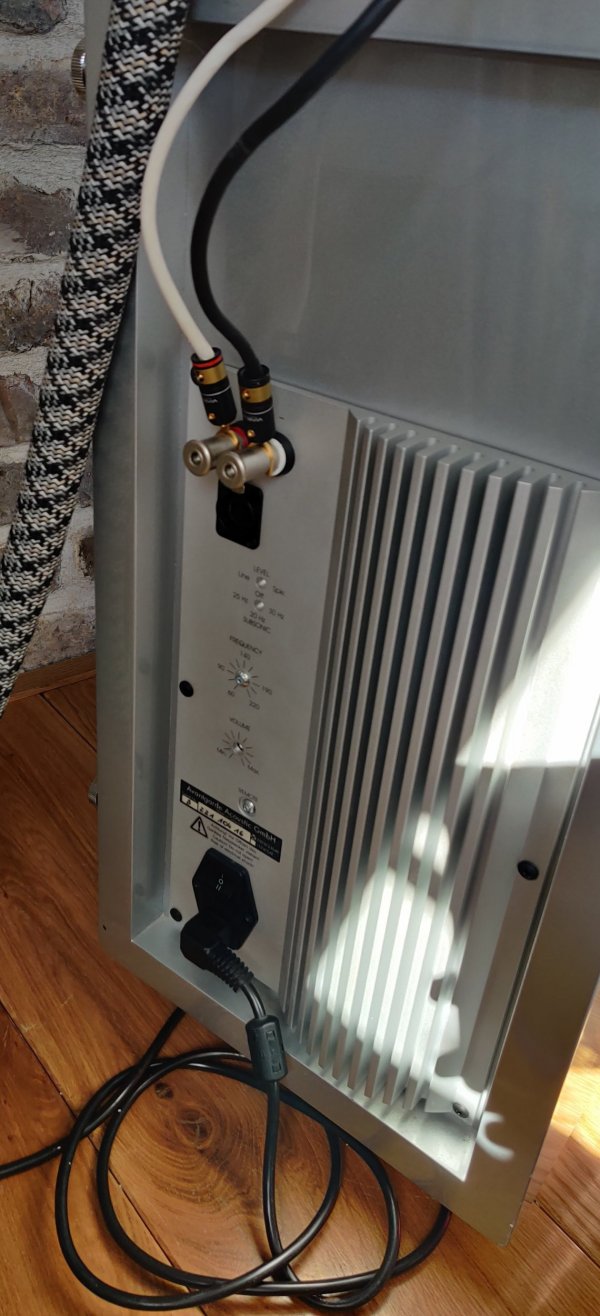
Pascal s-pro2
The amplifier modules are the Pascal s-pro2. These have 2x 500W. They already have the power supply on the board. So put mains voltage on and connect loudspeakers.
The ALLDSP is used by Avantgarde as the DSP. I use the ALLDSP XM12. This has a network connection, analog in and 2 stereo speaker outputs. Simply use the appropriate ribbon cable between the ALLDSP and s-pro2.
All the important signals are then included: audio in and auto standby, so that the amplifier goes off after a certain time. This can be set in the ALLDSP software if you are logged in as administrator.
Since the subs are fed with loudspeaker signals, you need a transformer with adaptation of the loudspeaker signal to line signal, which is used as the input signal for the XM12. I still had Lundahl LL1540 lying around.
My setup for the LS> Line Input Avantgarde:
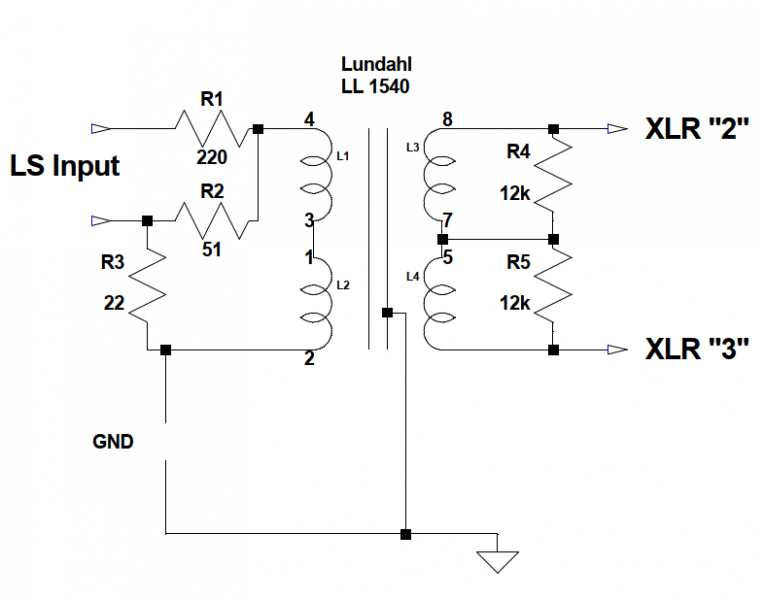
R1 and R2 2 or 3 watts.
The inputsection is copied from the original as Matthias Ruff did it. You could also build a normal voltage divider 10/1, but I suspect Matthias has thought of this somewhat unusual circuit for reasons. The GND bridge is there when it should hum; open in my setup.
I bought the modules from a PA company in Germany, which builds PA speakers with these modules. The modules are not easy to get hold of as a consumer, but asking a company which uses them, they will sell you some. If someone needs a contact, I can provide it per mail.
The ribbon cable must then be ordered in the appropriate length.
In terms of price, you have to think around € 900 plus metalwork.
Seen in this way, I think the price jump there was to the XD series is justified because the AA display is included and the modules are completely built into an aluminum housing. I haven't done that (yet). Doesn't seem to be necessary either.
In terms of sound, I'm really happy with it. It sounds a lot better without a DSP; clearer in the bass range, more powerful and really tight. The DSP can of course correct problems. Measured with Room EQ Wizard and Umik-1 and the EQ settings are manually transferred to the ALLDSP. I am now on the third attempt. Now I like it really well. For me, this conversion was definitely worth it.
Here are some pictures of the frequency response with s-Pro2 without switched on DSP in red and with DSP in blue. Not shown is my acoustic problem that between 300Hz and 3kHz; the reverberation time is too high = 0.7-0.8 seconds) Therefore the frequency response is not yet as it should be. I still have to do something acoustically.
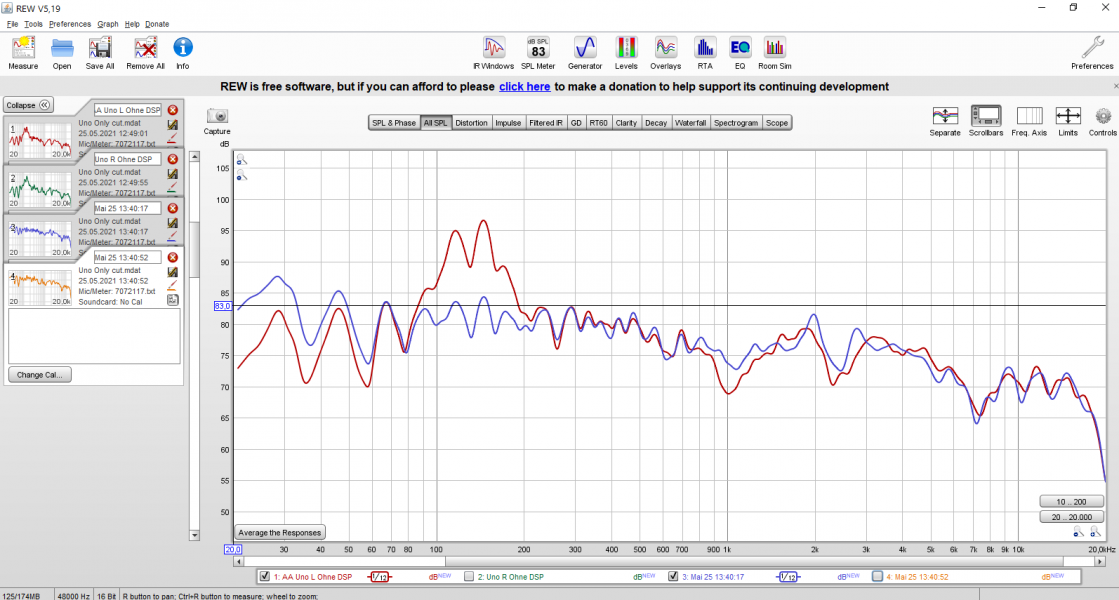
REW frequencyresponse on listening position
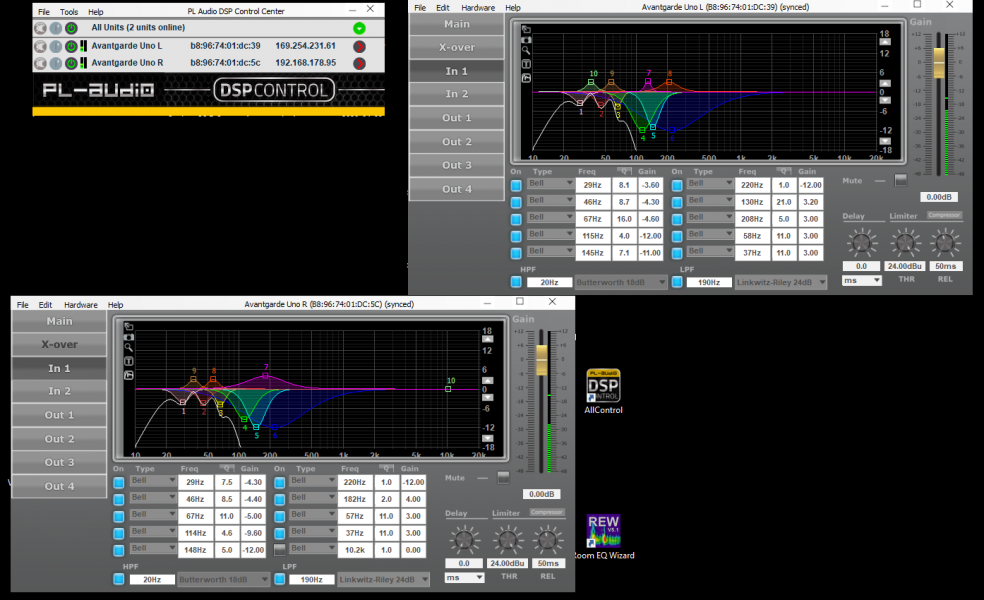
EQs at the moment. When the acoustics are better, I will reduce the EQ somewhat.
Maybe someone will build this also

Regards, Remco


















